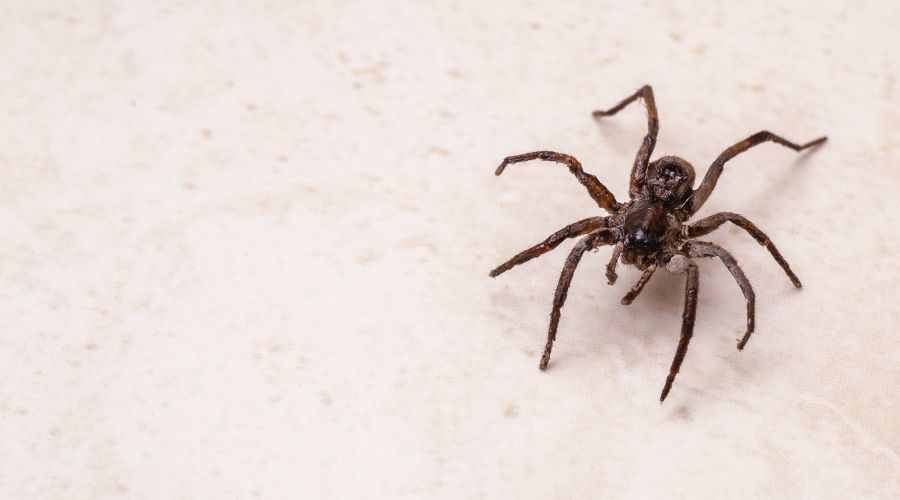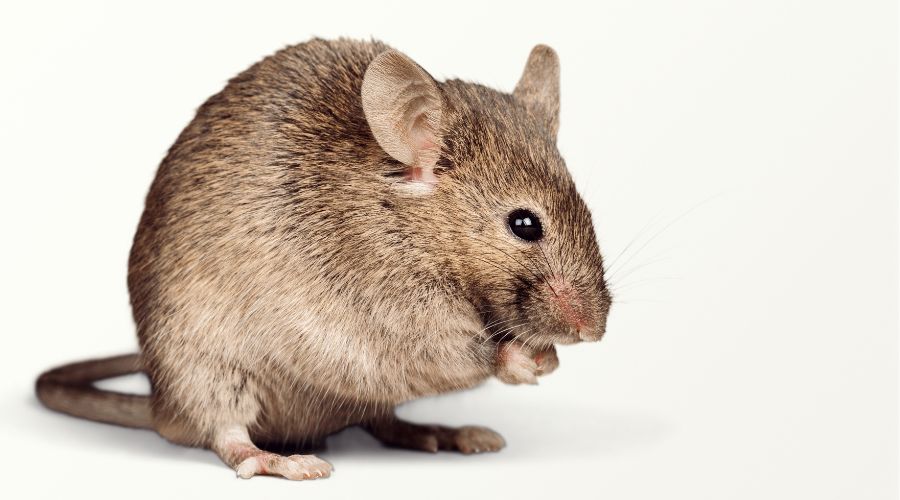Common Household Pests
11 Pests Commonly Found at Home
Pests. Most of us don’t like dealing with them, but they inevitably seem to find their way into our homes. While some are merely a nuisance, others can cause damage or spread disease. In some severe cases, you’ll need help from a pest control professional from Green Pest Control. Knowing how to identify, prevent and control common household pests can help you protect your home and family.
1. Spiders
Spiders often sneak into homes through cracks and crevices. Some of the most common species include black widows, brown recluses, wolf spiders, and crab spiders.
They feed on insects and other small prey. These creepy crawlies tend to hide in dark, undisturbed areas like corners, attics, basements, and crawl spaces.
Signs of Infestation: Webs in corners or walls are the easiest way to identify their presence.
Risk Level: While most household spiders pose no threat, some venomous varieties like black widows and brown recluses can inflict painful bites. These bites should always be taken seriously, especially in children or the elderly.
Prevent and Control: You can help control them by sealing any cracks or entry points. Natural repellents like essential oils can also deter them. For more severe infestations, targeted sprays or traps may be needed.
2. Cockroaches
Cockroaches are omnivorous scavengers that feed on a variety of organic matter. They prefer to hide near food and water sources like kitchens, bathrooms, and trash areas.
Signs of Infestation: Spotting live roaches, molted shells, fecal droppings, or egg cases. Roaches are most active at night.
Risk Level: Cockroaches spread germs picked up from sewers, drains, and garbage. Their cast-off skins, saliva and feces can trigger allergies and asthma.
Prevent and Control: Prevent cockroach invasion by keeping kitchen and bath areas clean and sealing cracks and entry points. Also, remove pet bowls, grease, and crumbs. Insecticidal dusts and baits can help get severe roach infestations under control.
3. Flies
Flies feed on rotten or decaying organic material. They gather wherever there is something to eat, moisture, and warmth, including trash bins and drains.
Signs of Infestation: You may notice swarming flies, wings or leg fragments, flyspecks, or maggots around these areas.
Risk Level: Flies can spread diseases like salmonella and E. coli by contaminating food supplies.
Prevent and Control: To help keep flies away, regularly take out garbage, clean drains and pipes, install screens, and use baits or traps.
4. Wasps and Bees
Wasps and bees feed on nectar and pollen.
Signs of Infestation: They tend to build nests on eaves, rafters, or cavities in walls. Their nests are made of a papery material and may contain hundreds of insects ready to defend them.
Risk Level: Stings can be painful and life-threatening for those with allergies.
Prevent and Control: Nests located near living areas should be removed by a professional. Sealing off holes in walls can deter future nest building. Avoid using strong perfumes, bright colors, or bare skin outdoors when stinging insects are active.
5. Ants
Ants forage for sweet and greasy grubs inside homes. They follow scent trails to food sources.
Signs of Infestation: Watch for trails of ants, especially near sugary or greasy spills. Ants tend to hide in cracks and crevices when not foraging.
Risk Level: Ants contaminate food supplies and some varieties can bite.
Prevent and Control: To discourage ants, store food in sealed containers, clean up spills and crumbs thoroughly, and use baits or sprays. Finding and destroying the colony is key for large infestations. Sealing cracks and entry points also help block their access.
6. Fleas
Fleas feed on the blood of animals and humans. They live on pet fur and bedding when not biting.
Signs of Infestation: Signs of fleas include seeing the tiny wingless bugs jumping, flea dirt that appears like pepper flakes, and skin irritation from bites.
Risk Level: Fleas can transmit diseases and parasites.
Prevent and Control: To get rid of them, treat all pets with vet-approved flea prevention medications. Thoroughly vacuum and wash pet bedding, then use sprays or foggers approved for fleas in affected rooms.
7. Silverfish
Silverfish feed on starches in paper, books, photos, wallpaper, or clothing. They prefer warm, humid places like attics, basements, bathrooms, and kitchens. As they’re nocturnal, you may spot them scurrying around during the night.
Signs of Infestation: Damage to paper and fabrics, powdery droppings, exoskeletons, and musty odour.
Threat Level: Silverfish damage possessions but are not a risk to human health.
Prevent and Control: Reducing humidity levels and sealing off cracks helps deter them. Traps and desiccant dusts provide control when infestations are severe.
8. Mosquitoes
Only female mosquitoes bite, feeding on human and animal blood. Mosquitoes rest in dark, humid areas when not actively biting.
Risk Level: Besides being a nuisance, mosquitoes can transmit serious diseases like Zika, West Nile, malaria, and encephalitis through their bites.
Prevent and Control: The best way to keep mosquitoes out is to ensure screens are in good repair. Also, remove any source of standing water around the home. Insect repellents applied to exposed skin and clothing also provide protection.
9. Termites
Termites feed on cellulose from wood. They burrow and nest in moist wood and soil.
Signs of Infestation: Mud tubes on walls, hollowed wood, crumbling drywall, or sagging floors.
Risk Level: Left alone, termites can cause major structural damage by eating away wood.
Prevent and Control: Prevent termite problems by eliminating wood debris and moisture accumulation near the home’s foundation. Get periodic professional inspections to check for early signs of termite activity. Treating infested wood and soil with termiticides can eliminate termite colonies.
10. Rodents
Rodents feed on many types of food scraps and grains. They tend to nest in secluded areas like attics, wall voids, crawl spaces, and cluttered rooms.
Signs of Infestation: Droppings, gnaw marks, nests, and rubbery-feeling grease marks indicate rodent activity.
Risk Level: Rodents contaminate and damage food supplies and structures. They also spread diseases through parasites like fleas, mites, and ticks.
Prevent and Control: Seal off entry holes inside and outside the home. Traps are effective for capture and removal in small infestations.
11. Bed Bugs
Bed bugs feed exclusively on blood, biting people and pets at night. They hide in cracks near beds and furniture during the day.
Signs of Infestation: Seeing live tan or rust-colored bugs, dark fecal spots, skin irritation from bites, and blood stains on bedding.
Risk Level: Bed bug bites are itchy and irritating. Heavy infestations can cause anxiety, sleeplessness, and even anemia.
Prevent and Control: Eliminating bed bugs requires professional heat treatment or insecticide applications to kill bugs and eggs hiding in tiny spaces.
Why Pest Control Matters
Keeping your home free of pests is about more than just having a clean house. Pests can spread bacteria and viruses and contaminate food. They even cause structural damage to your property.
If you ignore pests in your home, it can cause big problems. But don’t worry! There are things you can do to keep your home safe, including hiring a pest management company. The important part is finding pests early and using smart ways to get rid of them safely.


